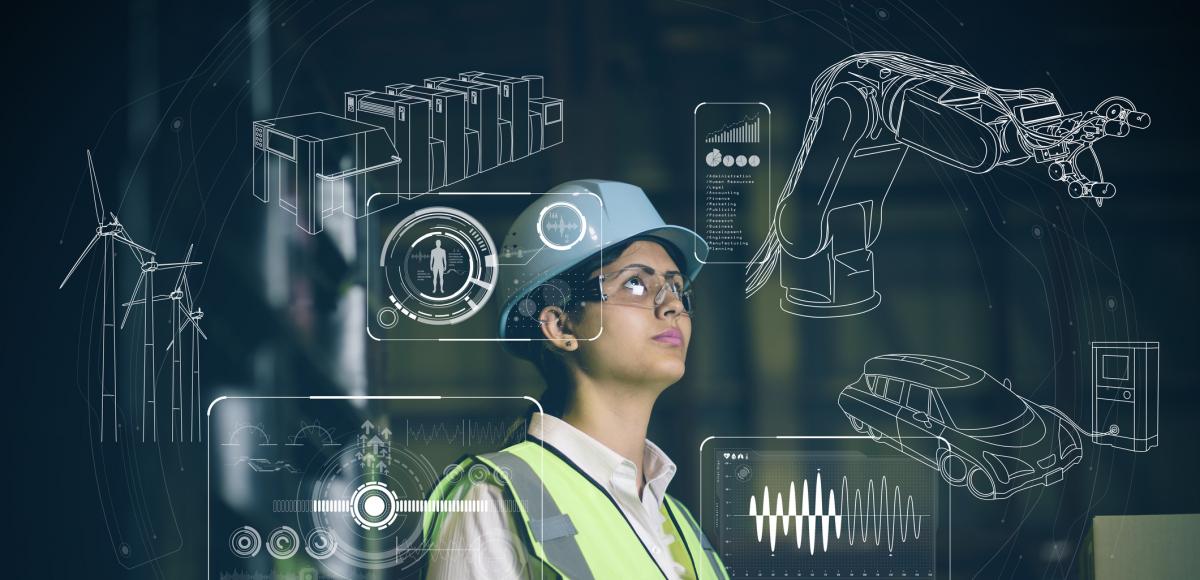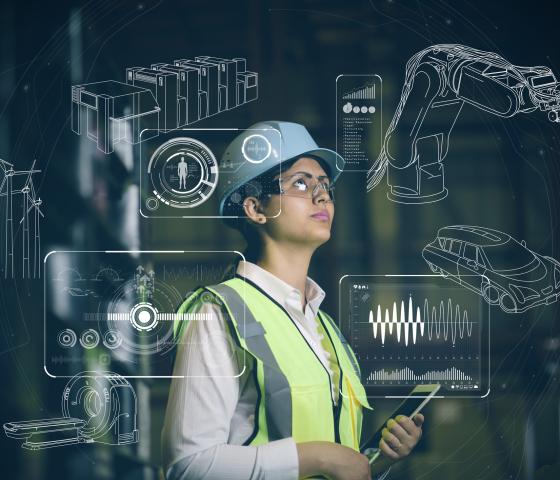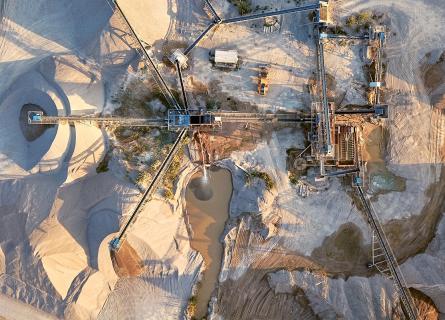
Digitalisation is a transformative force
Digitalisation is a transformative force
Digitalisation is a transformative force that will shape future industry, but many industrial companies are questioning how and what they should do to take advantage.

Heavy process industries within pulp and paper, chemistry, and mining have a focus on increasing productivity and process availability at the same time as decreasing running costs. This needs to happen with a constant focus on safety. The demand for sustainable solutions amongst consumers, customers and legislators has also radically increased lately. Hence, there are many things that process industry owners need to handle and solve.
Digital solutions within industrial production and business, often referred to as Industry 4.0, don’t just open new possibilities for the industry to improve its operations from a sustainability perspective, the digital tool box available today also leads to improved profitability. But where to start? What creates the most value? These are common questions. At the same time, many companies in general and process industries in particular, are facing new demands to mitigate climate change. To reach the sustainability goals, different digital tools could pave a smart way forward and create a more sustainable and efficient process industry as a result.
The transformation is coming fast and waiting is not an option. However, it is easier than many believe to utilise digital tools today.
Rapid development
Today’s digital tool box has great potential to be a central part of the solution for the industry’s current and future needs. Many industries today can already create significant value with relatively simple means and with relatively small investments. An important challenge, though, is the rapid speed with which digital transformation is happening. Investments in Industry 4.0 are, for example, expected to grow with over 30% annually (!) to 2023. At this rate, industries not acting in time risk being left behind and have hard to compete with those that have been in the fore-front and acted in time.
Technologies and examples
Discussions around industrial digitalisation often lead with the technology, such as AI, machine learning and virtual reality. But whilst these technologies are developing fast and open a number of interesting opportunities, at AFRY we focus first on the needs of our process industry clients. Only then would we start identifying solutions to these needs and the value digital tools can add.
Read the following specific examples and note that they could be equally applied in other process areas or industries:
- Existing equipment
A relatively simple solution is to update existing process equipment. As an example, a solution was made for a pulp mill that had an existing older chipper (wood is chopped into wood chips for further use in the pulping process). The equipment is simply described composed of rotating knives that need to be replaced at certain intervals. By connecting this equipment to a cloud solution the maintenance of these could be visualized and differences between operator shifts could be minimized, which in turn is estimated to save 5000-10,000 EUR annually for the mill. The interesting thing is that the investment in such a solution can be repaid in less than one year (depends on the starting point).
- Optimized production
Another example of a smart solution for a pulp mill involves optimization of a digester. In the digester, wood chips are mixed with cooking chemicals that chemically degrade and dissolve the lignin in the wood. A problem is that the natural raw material does not have constant chemical composition. By applying advanced data analytics the process could be optimized and the amount of residual lignin (i.e. Kappa-number) could be foreseen. This gave advantages such as improved quality and reduced costs. A solution of this type can save approximately 500,000-1,000,000 EUR annually for a mill with a pay-off time of less than one year.
- Visualization of environmental data
Mining companies are obliged to both report environmental data regularly and to have a system for long-time storage of the data coming from multiple sources (internally and externally). The data is available, but is scattered, and many mining operations do not have central systems that can collect, handle, and store this data. To visualize the environmental impact, a lot of manual work is needed by engineers. By creating a mobile solution for data collection together with smart sensors and integration between existing systems, this could be solved and an overview of the environmental impact could be created. At the same time the manual work could be minimized and the problem with long-time storage of data could be solved. Thereby, data could be visualized at the same time as money could be saved.
- Pumping station
Another example involves investment in a new pumping station for handling of process and non-process waters at a pulp mill. By simulation of different water-flow scenarios it was possible to simplify the originally planned solution and optimize the number of pumps. This solution resulted in around 20,000 EUR saving per year during the pumping station’s life time with a pay-off time of around five years of the investment.
How do we get there?
As illustrated in these examples, there are large annual savings to be captured with reasonable investments for those industries that choose to invest in digital solutions. Considering the large growth within industrial digitalisation, companies that decide not to be digitally prepared will be less profitable than those that start their digital journey in an early phase. We see large differences in process industries today, where some have not started their digital journey while others have done the work well and can now reap the fruits of their labour and investments.
It is important to consider the bigger picture and not to embark on isolated efforts alone such as optimising individual process steps. It is also important to make the solutions last in a changing digital environment. In most cases you also want to be able to scale the solution to other process steps. In order to do so the underlying systems and system architecture also needs to be prepared to handle this. Starting in the wrong place adds unnecessary complexity and costs, if your solution is to endure.

Balance complexity and effect
What is then the best way to balance complexity and effect when applying digital solutions? Which are the low-hanging fruits? Which suppliers and solutions should you choose? How can this be implemented without jeopardizing efficient production? In some places there is also likely challenges to find the right competences to handle these type of projects. We at AFRY discuss questions like these and help our clients on a daily basis. Our starting position is always our clients’ processes and we work together with our clients in process industries to determine their current state and together we clarify goals and desired states. We develop roadmaps to reach those goals, by developing and implementing value creating digital projects at the same time that the system architecture is developed.
It is not only about technology, though, it is also about how the client works and about their culture, as these are necessary and integrated parts. A successful roadmap therefore includes information systems, resources, organization and culture as well as a systematic view of how to go from the current state to the desired state as effectively as possible and collecting created values in parallel.
A typical roadmap creates value quickly
A roadmap gives clarity so that that the right investments and activities are done, and they are done at the right time. Furthermore, the roadmap improves visibility of data. But data that may be available already only adds value in a systematic process, as any delay is a cost (for example, in waiting for a report that is prepared manually by certain persons). This takes time and decisions and actions are happening with a delay. Hence data is seemingly available in theory, but not enough in practice.
Understanding data to get ahead
In the next phase of the roadmap, a better understanding of the data is achieved, which makes it easy to take the right decisions in real-time. By having access to data about the production or product and an understanding is in place, we can act faster and more proactively. In a later phase, when systems, organization, resources, and culture is ready we can start predicting what will happen before it happens.
What is most exciting is that we can start doing this in a structured way – over and over again – for process after process. In this way, solutions like those exemplified earlier can be achieved. Solutions that are built to last over time and can be scaled to create even more value.
To conclude, there is tremendous value to be captured for heavy process industries by working with industrial digitalisation. The road there might be complicated and there is a lot to consider, but one thing is certain:
Industrial digitalisation will happen, it will affect us all, and it will happen fast, so let us take advantage of this transformation together.





